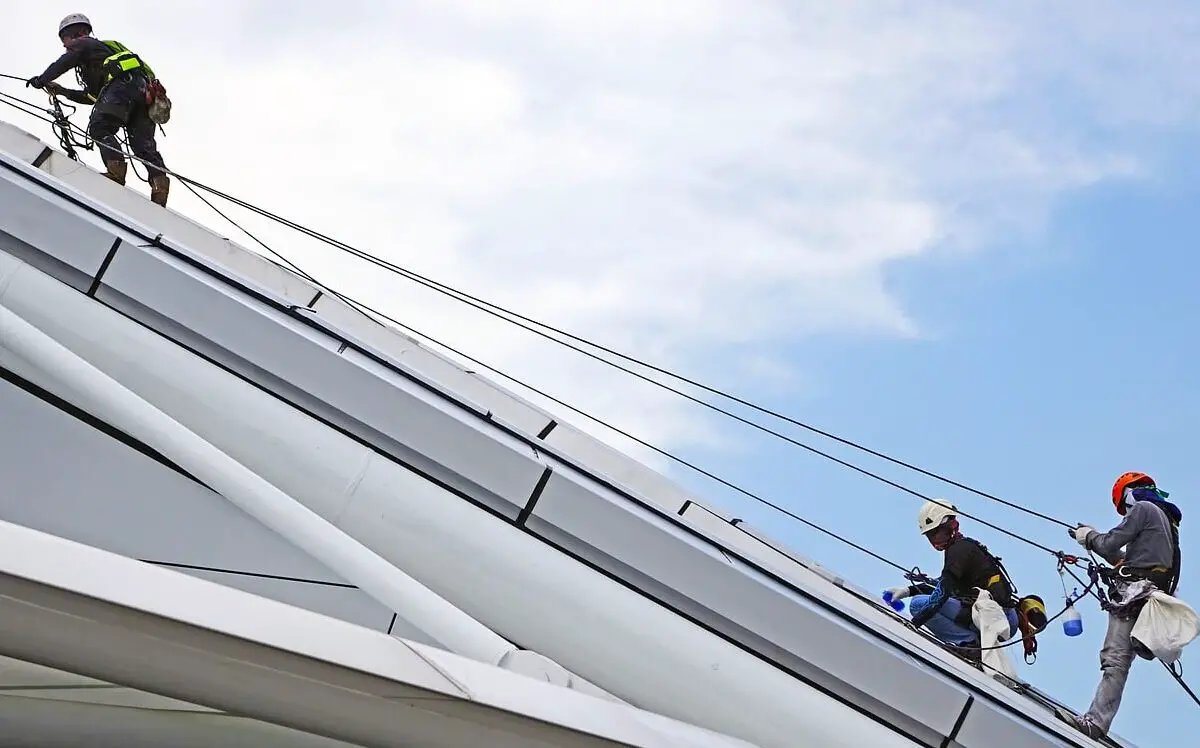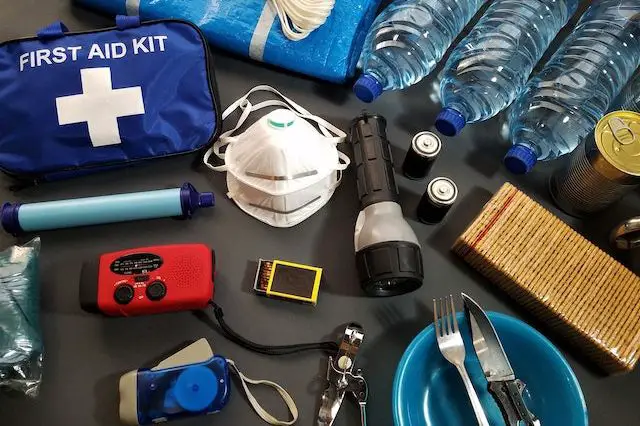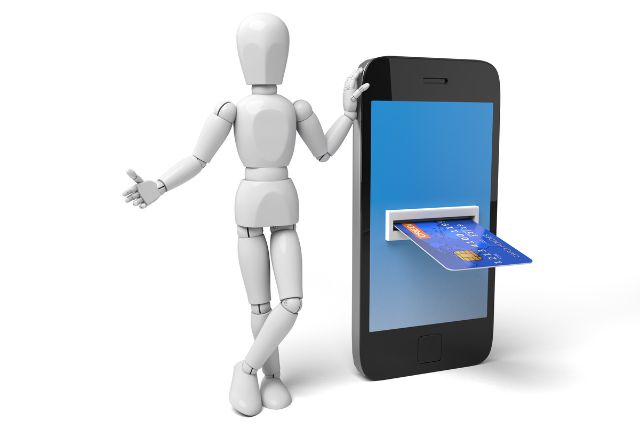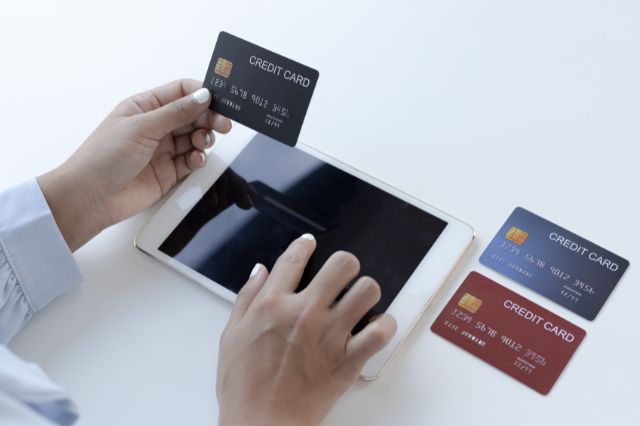Safety Tips
20 Workplace Safety Tips Every Employee Must Remember

Have you ever thought about the importance of workplace safety tips?
We all long for a safe and protected work environment. It gives peace and mental satisfaction to every employee. Hence, it becomes necessary for employers to provide a secure working atmosphere for enhanced performance efficiency.
What Is Workplace Safety?
Workplace safety encompasses all the components that affect the security, wellbeing and health of the workers. Natural hazards, risky surroundings and workplace violence affect employees negatively.
Strategic safety measures not only guarantee the security of employees but of equipment and property as well. It results in fewer mishaps and reduces workers’ compensation costs and repair costs.
When workers have confidence in their management’s dynamic role in assuring their safety, they work rigorously to achieve targets.
What Are the General Safety Rules?
Safety rules are not something that the staff members need to think about and devise. Supervisors are responsible for formulating rules and implementing strict adherence to them.
If everyone follows the rules, it will ensure a safe workplace.
Here are the general safety rules to enforce in every domain at all locations.
- Immediately inform all workplace injuries and ailments.
- Inform all dangerous acts and hazardous situations to your department head.
- Make sure to use seat belts while traveling in the company or personal vehicles.
- Guns, knives, or other explosives should not be permitted.
- Illegal drugs, or being under its influence should be banned.
- Only trained apprentices should deal with repair issues.
- Tag out processes must be followed.
- Only authorized staff members deal with the use of chemicals.
- Safety data sheets must be filled and maintained.
- Cleanliness is key to good health. Keep the work area and surroundings clean.
- Smoking areas should be designated. Allow smoking only in assigned territory.
- Emergency exits and equipment must not be blocked.
- Protective gears and suggested personal protection apparatus must be used whenever needed. You are responsible for your security. In case of dealing with fire, electricity, or working at height, wear head protection, gloves and foot protection, etc.
- Take short breaks to avoid monotony.
- Follow safety signs, instructions and directions.
It is essential to acknowledge and follow these rules to experience safe and healthy professional life. If you obey rules, you need not protect yourself with weapons.
20 Workplace Safety Tips to Share with Your Employees
I always consider my staff members as my extended family and put my best foot forward to educate them about basic safety tips. It is vital to stay healthy and protected to perform best. Workers are more valuable than work. Workplace safety is a team effort.
Without further ado, let’s discuss 20 tips to share with workers to make your office safe.
1. Educate every employee
From the company’s CEO to guard, everyone must understand the significance of workplace safety. Higher management is responsible for the quick identification of risks that employees may face on the job.
Identification of hazards is necessary to mitigate risks. Arrange a training program for staff to make them aware of the dangers and the precautions to avoid illness and fatal injuries.
2. Reduce workplace anxiety
A friendly boss always cares for his team members as his children. He is their confidence booster and tries to give them a stress-free environment.
Appreciate them for their good work. Give them a break from long working hours. Create a conflict-free atmosphere and give the staff a bonus for their proactive participation to exceed profitability targets.
3. Make your work area organized and clutter-free
Staying organized makes us focus on tasks and expedites productivity. Scattered objects are just a reason for stress. Keep your table clean to avoid distractions and mistakes.
Use a planner. Set your priorities. Put things at their designated place and you will feel the difference yourself.
4. Be mindful of your surroundings
Each work location has its inherent threats, including heavy machinery, conveyor belts, stumbling over things, or cunning people around. Beware of your neighborhood to deal with things appropriately.
Knowing the potential dangers will assist you and your colleagues in maintaining a distance from dangerous situations.
5. Lift with your legs, not your back
We have heard this saying many times in our life. It advises keeping a good posture. At your desk, maintain a straight sitting posture to avoid back issues, neck pain or carpal tunnel.
If you have to lift anything heavy, give yourself a few seconds to think of mechanical aid to assist you or call any colleague or subordinate to help in lifting.
6. Avoid shortcuts
Set high standards for yourself. Do not look for shortcuts. Shortcuts may lead to violations of safety policies and rules.
Work as per instructions and set precautions. Alternate routes are not longlasting. They can expose you to injuries. Make sure you are going the right way and utilizing the right tools for assigned tasks.
7. Keep yourself updated with new safety procedures
If your organization is installing some new machinery or arranging a training program, make sure to attend it to understand the changes.
It is your responsibility to comprehend new changes and processes to keep yourself at bay from potential risks.
8. Stay fresh and alert
Take regular breaks to keep your spirits up and avoid fatigue. Prolonged working hours may make you prone to injuries or illness; hence it is vital to keep yourself fresh.
Plan your work in a way that all difficult tasks are done at the beginning of your shift.
9. Service your machinery and tools regularly
Overhauling of instruments and apparatus must not be done when they breakdown. Regular servicing reduces risks of sudden failures and keeps the workplace safe.
It maintains high-quality functionality and minimizes fluctuations.
10. Report uncertain conditions
The best solution to halt unsafe situations from occurring is to inform the higher authorities quickly. Your manager is committed to provide a secure surrounding to every worker and to take steps to avoid future problems. This doesn’t have to just be inside the premises either; should you notice that the outside area is perhaps at risk of becoming unsafe due to ice or snow, you should inform them of this so that they can then take necessary measures, and perhaps even get something like one of these snow clearing ploughs, in order to prevent any accidents from occuring.
11. Wear personal protective equipment
PPE reduces risks if worn properly. Gloves, helmet, earplugs, goggles, etc decrease the risk of physical injuries. Employees need to give proper training about the selection, maintenance and use of PPE to assure its effectiveness.
12. Stay hydrated
I drink a lot of water and encourage my colleagues to do the same. Dehydration is dangerous for cognitive abilities. It slows down your thinking process.
Take water or fresh juices in between work intervals to energize yourself.
13. Execute emergency procedures
Unfortunately, tragedies do not report their arrival. We have to be well-prepared to deal with every type of emergencies to guarantee safety not only for ourselves but also for our business, colleagues and visitors.
Identify natural disasters and potential risks beforehand to better deal with them. Devise an emergency management plan and train yourself accordingly.
14. Stay sober and know your rights
Avoid alcohol and other drugs to keep yourself sane and avoid fatalities.
Know your rights that your employer is entitled to provide you for your security. Keep track of your insurance plan. Seek guidance from peers in case of any ambiguity.
15. Share your concerns
If you have any doubts, share them. Discuss your concerns with your HR manager. He is obliged to alleviate all the reasons for stress or anxiety to put you at ease.
16. Avoid doing repetitive tasks
Repetition is strenuous for the mind and body. It is, in fact, more dangerous than we generally perceive. It makes us uncomfortable in many ways.
Doing the same task, again and again, sometimes makes us feel less creative. It is a blow to a task-focused individual when he feels bored with his work. It can also cause occupational overuse syndrome (OOS).
17. Keep emergency exits clear
Blocking your emergency exits is just a foolish act. Keep your crisis exits free from any kind of obstructions. It is the matter of your safety and also of those around you.
Ensure to give clear access to these life-saving doors in the time of emergency.
18. First aid training
First aid is the immediate help you can give to yourself or those who need it near you. Always keep your first aid box filled with necessary things like gauze rolls, safety pins, pain killers and ointment.
It is advisable to take proper first aid training to deal with emergencies.
19. Read warning signs
It is pivotal to read all warning signs and understand their meaning. Take them seriously and do not overlook them.
Make sure that you know all the potential dangers ahead by deciphering the meaning of signs in front of you.
20. Keep your communication channels open
Take time to connect with people. Develop impeccable relationships with them. Communication is the key to establish long term associations. Connections are very crucial for workplace effectiveness.
Stay engaged and schedule a time for face to face meetings for better interaction.
What to Do When Your Employee Is Injured At Work?
Formulate plans to deal with a sudden employee injury. Train yourself and other efficient workers to give an immediate response to the crisis while accurately assessing the situation.
You can deal with minor cuts, scrapes and bruises with basic first aid kit. Seek medical assistance in case of serious injuries.
Follow these tips to face employee injury immediately.
- Be prepared and plan medical care
- Thoroughly investigate the incident
- Stay informed and check your policies
- Take precautions for other workers
Bottom Line
Workplace safety benefits both the employers and employees. It reduces employees’ stress and makes them work harder. They know that their boss is looking after their health and it is payback time by giving their best.
Employees’ performance improves when they know how to escape injuries and have confidence in management’s ability to protect their staff.
Safety Tips
What Items Should You Always Have in Case of an Emergency?


Putting together an emergency supply bag is a crucial part of protecting your family from danger in the case of a disaster. You, your family, or your home cannot afford to go without the essentials provided by an emergency pack for a brief period. Keep your kit in a readily accessible location that is well-known to all home members. If you are wondering what items your survival bag should contain, we’ve got you covered. Here is a list of survival items that every house should have.
First Aid Kit
Every residence should have a first aid kit readily available. You may assemble your own, but plenty of pre-packaged options are available from various vendors. Stock up on over-the-counter medicine for anyone in your family who needs it in case of an emergency. Add emergency blankets to your first aid pack. They are constructed of reflective foil, fold up into a bag the size of your fist, and are surprisingly effective at keeping you warm in the event of a crisis.


Water Filter
Human existence depends on access to clean water, yet natural catastrophes may impact public water systems and private wells. The Department of Homeland Security suggests keeping three days’ worth of drinking water (or one gallon per person) in the house at all times. Most homes already have some backup water supply, but being able to make potable water in an emergency may be invaluable. A portable water filter provides low-cost protection while taking up little space. The water may not be refreshingly icy and lemony, but at least it won’t be harmful.
Duck Tape
Because of its versatility, duct tape should always be included in an emergency kit. It has a wide range of applications, from mending leaky roofs and fixing broken windows to wrapping trash for disposal. In addition to its obvious use in a variety of household and survival situations, duck tape has a number of more niche applications. Duct tape may be used to close up ventilation openings if you’re in a potentially hazardous environment. You can use duct tape to fix just about anything in an emergency. Torn clothes, as well as holes in shoes and gloves, may be repaired, but not attractively. It’s useful for making quick fixes to vehicles, such as sealing a leaky hose. With its help, an injured ankle may be supported and a bandage kept in place.
Multitool
The majority of homes have some form of tool set, and some of those sets are likely to be rather complex. Despite this, it is advised that you include a multitool in the emergency kit that you keep in your house. If you do it this way, all of your critical gear will be exactly where you would expect it to be, and it will still be tiny enough to fit in a pocket in case you find yourself in a situation where you need to go exploring without your regular tools.
When you prepare for crises by stocking up on these products, you’ll be doing everything you can to keep your loved ones safe. Make sure everyone in your home is aware of where the emergency supplies are kept. Peace of mind and increased capacity to deal with the unexpected are two benefits of being well-prepared. Maintain vigilance and contingency planning to keep your loved ones safe and secure.
Safety Tips
Top 4 Payment Options to Stay Safe on the Internet


As online transactions become increasingly prevalent in our daily lives, it is crucial to prioritize security when making payments on the Internet. With cyber threats and data breaches on the rise, choosing the right payment options can help safeguard your sensitive information and financial details. In this article, we will explore the top four payment options that can help you stay safe while conducting transactions online. One of these options is Paysafecard, a popular and secure payment method.
Credit Cards
Credit cards are one of the most widely accepted and convenient payment options available online. However, using credit cards requires caution and adherence to security best practices. To stay safe while using a credit card, follow these guidelines:
- Shop on secure websites. Ensure that the website you are transacting on has a secure SSL (Secure Sockets Layer) encryption, indicated by a padlock icon in the browser’s address bar. This encryption ensures that your card details are transmitted securely.
- Use a virtual credit card. Some banks offer virtual credit cards with limited credit lines specifically for online purchases. These cards can minimize the risk of exposing your primary credit card details if a data breach occurs.
- Regularly monitor your statements. Keep a close eye on your credit card statements and report any suspicious or unauthorized transactions immediately to your bank.
Digital Wallets
Digital wallets, also known as e-wallets or mobile wallets, have gained significant popularity in recent years. These wallets provide a secure and convenient way to store payment information and make online transactions. Popular digital wallets include PayPal, Google Pay, and Apple Pay. Here’s why digital wallets can be a safe payment option:
- Encryption and tokenization. Digital wallets utilize advanced security measures such as encryption and tokenization to protect your payment data. This means that your sensitive information is never directly shared with the merchant, reducing the risk of data breaches.
- Two-factor authentication (2FA). Many digital wallets offer 2FA, adding an extra layer of security by requiring a unique verification code or biometric authentication for each transaction.
- Buyer protection. Digital wallets often provide buyer protection programs that can help you resolve disputes or fraudulent transactions, offering an added level of security and peace of mind.
Cryptocurrencies
Cryptocurrencies like Bitcoin and Ethereum have gained popularity due to their decentralized nature and robust encryption protocols. While not yet widely accepted, they offer several security advantages for online transactions:
- Anonymity. Cryptocurrencies provide a certain level of anonymity as transactions are pseudonymous and not directly linked to personal identities, reducing the risk of identity theft.
- Blockchain security. Cryptocurrencies rely on blockchain technology, which provides a decentralized and tamper-proof ledger. This makes it difficult for hackers to manipulate transaction records or compromise the security of your funds.
- Secure transactions. Cryptocurrencies use cryptographic protocols that ensure the integrity and security of transactions. The use of private and public keys makes it challenging for malicious actors to intercept or tamper with your payment information.
Prepaid vouchers
Paysafecard is a prepaid payment method that allows you to make online purchases without disclosing any personal or financial information. Here are some key features of Paysafecard:
- Prepaid vouchers. Paysafecard operates on a prepaid system. You can purchase physical or digital vouchers with a specific value from authorized retailers and use them to make online payments.
- No personal information required. When using Paysafecard, you do not need to provide any personal or financial details. This eliminates the risk of your information being compromised in a data breach.
- Widely accepted. Paysafecard is accepted by a multitude of online merchants and gaming platforms. Convenience and security are the reasons Paysafecard casinos UK becoming more popular nowadays.
Final words
With the increasing prevalence of online transactions, it is crucial to prioritize safety when making payments on the internet. By using secure payment options such as credit cards, digital wallets, cryptocurrencies, and Paysafecard, you can minimize the risk of falling victim to cyber threats and data breaches. Each of these options offers unique security features that provide peace of mind and protect your sensitive information during online transactions. Remember to always exercise caution, stay informed about the latest security practices, and choose the payment method that best suits your needs and preferences.
Safety Tips
7 Effective Ways to Protect Your Credit Card Information


While credit cards are becoming popular rapidly, there is also a surge in credit card scams. According to the reports, In the last three months of 2019, credit card scams cost 19.7 crores, and the number of fraud cases was 6,117, which is pretty high!
Since online platforms are taking over, knowing and understanding that your information is always at risk is imperative. Especially when you are frequently using that information on different online platforms, there are high chances of them being stolen. There are chances of extreme monetary loss due to these kinds of scams.
Here are seven ways to protect your card information!
1. Do not share your credit card information with anyone
A credit card contains a unique number, the cardholder’s name, the expiry date, and a CVV. This information is required to complete a transaction using the best credit card in India. Do not share these details, especially CVV, with anyone. This is one of the basic yet essential steps of keeping your card safe.
2. Do not click on unauthorised website links or any other suspicious links
Receiving random links on social media sites has become a common occurrence recently. These links are clickbait to lure people into falling for the scammers. Generally, these links have catchy captions that grab attention quickly, and you might click on them out of curiosity. They allow scammers to access your information without your knowledge and commit scams. Also, many random websites ask for debit card or credit card information to access them, and scammers can easily steal your information. Remember not to share any card information on these sites.
3. Do not share any OTP with anyone
A One-Time Password, also known as an OTP, is a secret pin that comes to your registered mobile number after you put the information on any website for the transaction. This pin is required to complete any transaction, so if you received an OTP you have not requested, do not share that with anyone. There are many instances where the scammers ask for OTP over call, do not be gullible and share such information with them. Generally, scammers cannot process any transaction without an OTP.
4. Create Pins that are hard to crack
Do not create pins that are easy to guess. Use at least one capital letter, small letter, number, and special character. Do not use similar pins for all cards. Also, avoid using special dates like birthdays as your pin, which are easy to guess. This will help you to stay safe.
5. Keep changing your PIN frequently
Your pin is the simple and best way to secure your card. ATM PIN is a secret number that only you should know. No one can access your card without that pin, so keep changing your pin at least once a month to stay safe. Keeping the same pin for a long time can risk your privacy.
6. Identify Secured networks before making a payment
One way of identifying a secured network is that the website starts with “HTTPS” instead of “HTTP.” This “s” in “HTTPS” signifies security. Also, the URL section will show as locked, and a little locked sign will appear at the beginning of the URL. This is one of the most common ways to identify a secured website.
Watch carefully before using your credit card on random websites. These websites are encrypted, so the data you enter remains protected through encryption and is hard to crack. Hackers can get your data for any monetary scam if the website is not encrypted.
7. Regularly check bank statements and update immediately in case of any dispute
Generally, we tend to ignore the statements sent by the banks. However, they are essential since they contain every little transaction detail. Check the bank statements carefully to notice if there is any suspicious transaction that happened that you are not aware of. The scammers can be clever, and these statements would be the best way to understand whether your credit card data is being used fraudulently.
In case of any dispute, contact the authorities immediately. Do not delay if you notice any discrepancy in your expenditure statement. Banks tend to help in such cases and reverse the payment.
Credit cards are convenient and easy for online transactions, and you must apply for the best credit cards in India as they would provide better support. However, stay alert and keep yourself updated about the scams.
You can easily avoid these by being slightly more careful.
-



 Captions3 years ago
Captions3 years ago341 Sexy Captions to Fire Up Your Instagram Pictures
-



 Captions3 years ago
Captions3 years ago311 Night Out Captions for Instagram and Your Crazy Night
-



 Captions3 years ago
Captions3 years ago245 Saree Captions for Instagram to Boost Your Selfies in Saree
-



 Captions3 years ago
Captions3 years ago256 Best Ethnic Wear Captions for Instagram on Traditional Dress
-



 Captions3 years ago
Captions3 years ago230 Blurred Picture Captions for Instagram
-



 Captions3 years ago
Captions3 years ago275 Deep Captions for Instagram to Express Your Thoughts
-



 Quotes3 years ago
Quotes3 years ago222 Nail Captions for Instagram to Showcase Your Fresh Manicure
-



 Captions3 years ago
Captions3 years ago211 Laughing Captions for Instagram | Laughter Is the Best Medicine







